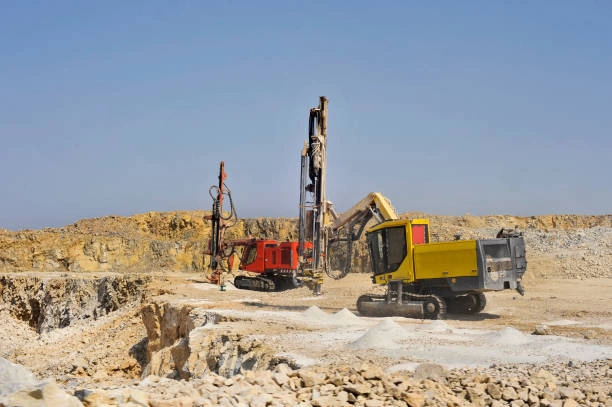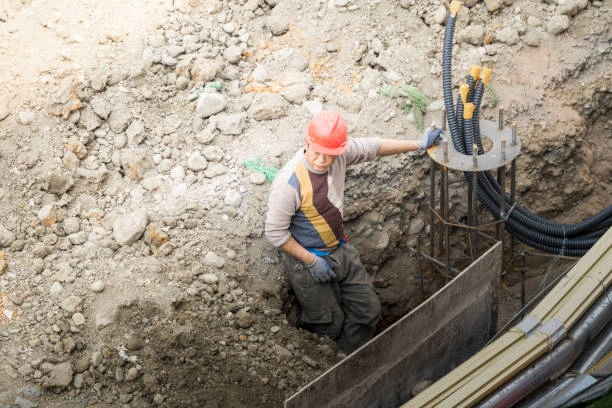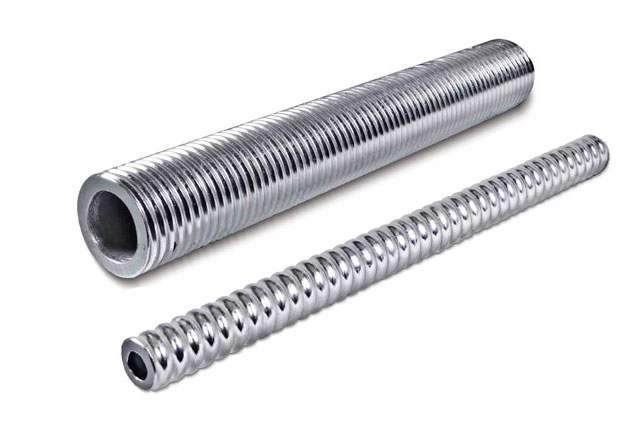In the realm of construction and DIY endeavors, the importance of having the right tools and knowledge cannot be overstated. Self-drilling drywall anchors serve as indispensable components, offering a secure way to attach objects to drywall. In this blog, we’ll take you through a detailed guide on how to install these anchors effectively. But first, let’s delve into the broader context of the tools they’re related to, much like those utilized in the mining industry.
The Significance of Mining Tools

Mining operations hinge on a diverse array of tools to execute various tasks. Tools such as top hammer drills and down-the-hole drills are employed for drilling, while self-drilling anchors play a pivotal role in ground support. These tools are essential for exploration, production, tunnel excavation, and maintaining the stability of mine infrastructure.
| Tool Type | Function |
| Top Hammer Drills | Drilling holes in mining operations |
| Down the Hole Drills | Deep-hole drilling in hard rock |
| Self-Drilling Anchors | Ground support and stabilizing structures |
Understanding Self-Drilling Drywall Anchors

There are a variety of self-drilling drywall anchors on the market, each with a specific function, just like the wide variety of rock drilling tools in the mining industry. Plastic self-drilling anchors are lightweight and suitable for lighter loads, comparable to the small rock drilling tools used in the early exploration of mines. They are perfect for hanging small picture frames or decorative items.
Metal self-drilling anchors, on the other hand, are strong and durable and can support heavier objects, similar to the heavy rock drilling tools and self-drilling anchors used in the mining industry to stabilize large structures and handle major production tasks. By understanding these types, you can choose the right self-drilling drywall anchors for your project, ensuring a secure hold, just as choosing the right rock drilling tools is critical to the success of a mining operation.
Tools Required for Installation
Before you embark on the installation journey, it’s crucial to gather all the necessary tools. A drill is a must-have, and one with variable speed settings is highly recommended as it offers greater control during the process. Additionally, a screwdriver can come in handy for final adjustments. Ensure you have the appropriate self drilling drywall anchors and the hardware, such as screws, needed to attach your object to the anchor. Here’s a checklist table:
| Tool/Hardware | Importance |
| Drill | For inserting the anchor |
| Screwdriver | For tightening screws |
| Measuring Tape | For accurate location marking |
| Spirit Level | For ensuring level installation |
| Self Drilling Drywall Anchors | The main component |
| Screws | To attach objects to anchors |
How to Install Self-Drilling Drywall Anchors

Step 1: Mark the Location
The initial step involves marking the precise spot on the drywall where you plan to install the anchor. Use a measuring tape to ensure accuracy, especially when installing multiple anchors for larger items like shelves. It’s essential to make sure the marks are level, and a spirit level can be a great help with this. For instance, when hanging a large mirror, you need the anchors to be at the same height on both sides to ensure it hangs straight.
Step 2: Select the Right Anchor
Based on the weight of the object you intend to hang, choose the appropriate self-drilling drywall anchor. As previously mentioned, different anchors have varying load-bearing capabilities. If you’re uncertain, it’s advisable to opt for an anchor with a slightly higher load-bearing capacity than required for added safety.
Step 3: Prepare the Drill
Set the drill to the appropriate speed. For most self-drilling drywall anchors, a medium-high speed works well. However, if the drywall is thin or the anchor is small, you may need to reduce the speed slightly to prevent damage to the drywall. Insert the anchor into the drill chuck and ensure it’s firmly fastened.
Step 4: Drill and Install the Anchor
Position the tip of the anchor on the marked spot on the drywall. Hold the drill perpendicular to the wall and start drilling, applying gentle pressure. You’ll feel the resistance as the anchor cuts through the drywall. Once the anchor is fully inserted, stop drilling; it should be flush with the drywall surface.
Step 5: Attach the Object
Take the screw compatible with the anchor, insert it through the object you want to hang, and then screw it into the anchor. You can use a screwdriver or the drill (set to a low – torque setting) to tighten the screw. Make sure the object is firmly attached and level.
How Can I Test if the Self-Drilling Anchor is Installed Properly?

Before hanging the actual object, it’s a good idea to test the anchor with a small weight. Hang an object that weighs a fraction of what the final item will be. If the anchor holds without any signs of pulling out or loosening, it’s likely installed correctly. You can also gently tug on the anchor to check for stability. If it feels loose or wobbly, there may be an issue with the installation, and you may need to reinstall the anchor.
Are there any safety precautions I should take when installing self-drilling drywall anchors?
Always wear safety glasses to protect your eyes from any debris that may fly off during the drilling process. When using a drill, make sure you have a firm grip on it to prevent it from slipping. Also, be cautious of the area around the drywall.
Ensure there are no electrical wires or pipes hidden behind the wall where you’re installing the anchor. If possible, use a stud finder to locate studs in the wall, as installing into a stud provides a more secure hold and can also help you avoid hitting any hidden utilities.
Tips for a Successful Installation
Test the Anchor: Before hanging the actual object, it’s wise to test the anchor with a small weight. This helps you determine if the anchor is properly installed and if there are any potential issues.
Avoid Over – Tightening: When tightening the screw, be cautious not to over-tighten. Over-tightening can cause the anchor to pull out of the drywall or damage the attached object.
Use Wall Plugs in Problem Areas: If the drywall seems too soft or there are areas where the anchor might not hold securely, consider using wall plugs in addition to the self-drilling anchor for extra support.
Conclusion
Installing self-drilling drywall anchors can be a straightforward process when you have the right tools and follow the correct steps. Just as the right tools are essential for efficient mining operations, using the proper anchors and installation techniques.


